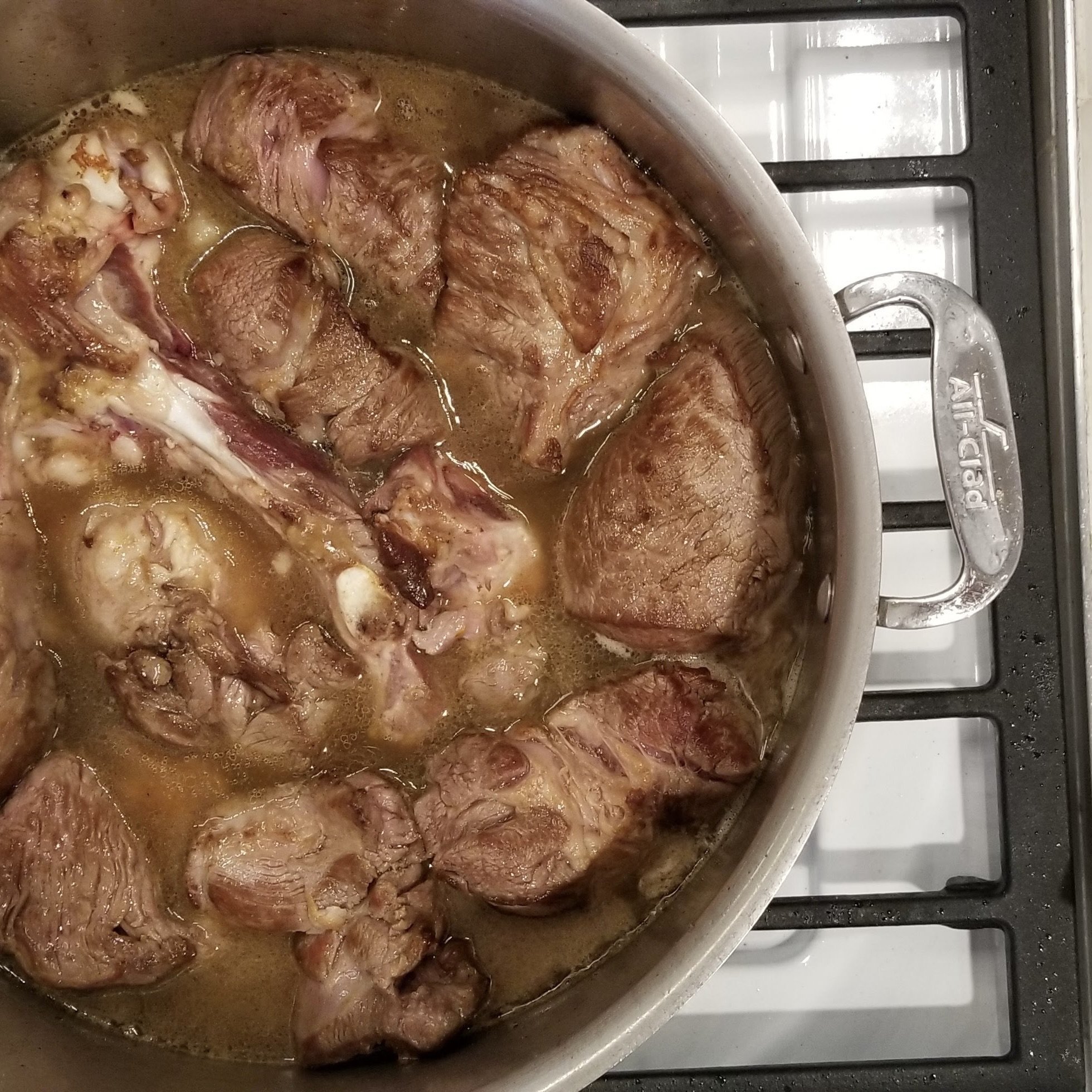MISE EN PLACE
You could think of the French culinary phrase “mise en place” more profitably as a way of life than a mere cooking technique. It means “set in place” (or, more broadly, “put everything in its proper place”) and is that collection of simple tasks to be done before you even light the flame.
MOTHER SAUCES
In the 1800s, Antonin Carême, along with Auguste Escoffier, one of the two revered pillars of “grande cuisine,” tried to govern the burgeoning broth of French sauces by categorizing them into what came to be called the five (or six—no one could agree to put a lid on it!) “Mother Sauces.”
DEFATTING OR DEGREASING LIQUIDS
Cooks have come up with bunches of ways to remove unwanted fat from their preparations of stock or broths, gravies, stews or braises, and other “wet” dishes. (Defatting solid foods such as grilled steak or roast meats is generally a slice of a knife.)
HARD-COOOKED EGGS
Everyone wants two things in a hard-boiled (sometimes called “hard-cooked”) egg: that it’s cooked through, yet no bitter green ring surrounds the yolk; and an egg that’s easy to peel.
VINAIGRETTE
Most cooks have their favored ratio of vinegar to oil, their favorite type of oil or of vinegar (depending on each pantry’s hierarchy for either), their preferred method for combining all the ingredients and—not the least—what flavorings they add to the vinaigrette to distinguish it.
TO DEGLAZE A PAN
Caramelized proteins or sugars left behind from browning meats are called “fond,” as in “foundation,” because they are now the very flavorful base for sauces that can be made directly in the same pan. Adding a liquid with which to boil, then scrape up these bits, is called “deglazing.” Photo from techfun on flickr.com.
CORNING BEEF
To “corn” a cut of meat means to preserve it in salt or heavily salted brine. (A “corn” of salt used to mean what we term “a grain of salt,” hence “corned beef.) The process is simple, although time-consuming, and was used by shippers of beef, and other meats, from Europe to the New World.
CUTTING UP FOWL
There’s one really good reason to cut up a whole chicken: it’s always a lot cheaper to buy a whole bird than already cut-up pieces like thighs or breasts. You also can do this with duck or goose and, if you’re strong enough, with a whole turkey.
CHIFFONADE
This culinary term means to slice or cut leafy greens such as lettuce (or, in this recipe, chard) or fresh leafy herbs (the best example is basil) into very thin strips that are then used as an accent or garnish for any number of dishes such as soup, pasta, or fish. It derives from the French “chiffon,” meaning rag; therefore, “to cut up into rags.”
BUTTERFLYING MEAT
“Butterflying” the piece of meat, before it is either roasted or grilled, gives it a flatter profile and allows for more even cooking. It also guarantees a crisper exterior or skin, and makes for easier carving and serving when cooked.
BROWNING MEAT
Browning meat creates flavor compounds that, in turn, interact to make additional savory, complex flavor compounds.
EASY SWALLOWING FOOD AND COOKING
Hints on cooking and serving foods, with three recipes, that are easy to swallow (especially for those who have difficulty swallowing after surgery, say, or due to trauma to the mouth or throat.)
PASTA SHAPES AND THEIR SAUCES
There is real rhyme and reason for pairing certain pasta shapes with certain sauces.
LIDIA’S MARINARA SAUCE & BSJ’S TOMATO PREP TIPS
The best marinara sauce—the true marinara sauce—is made in a skillet right before it’s eaten. Takes 20 minutes tops. It’s bright red (not kettle-cooked red) and smells of the perfumes of pomodoro, little else.
HOW TO COOK PASTA
Google “how to boil water” and you’ll get 461,000 results. Seriously. OK, so it turns out more complicated than we might assume. But that’s especially the case when we’re cooking pasta. Good pasta is more than boiling water, plus the pasta.
NONE OF THIS IS TRUE
During my years of writing about food, cooking and wine, I’ve taken a hard look at some rules and myths such as “Always presoak dried beans” or “Only flip a grilled steak once.”
HEN AND CHICKS: VARIATIONS
One neat thing to do with an everyday, basic, all-time-favorite recipe is to put spins on it, adding to or tinkering with it so it’s not only different, it’s exciting again.



















